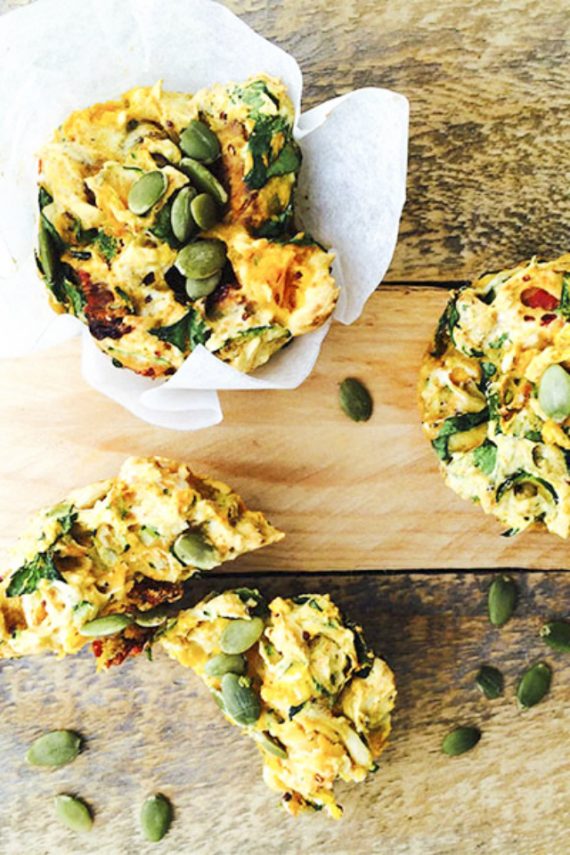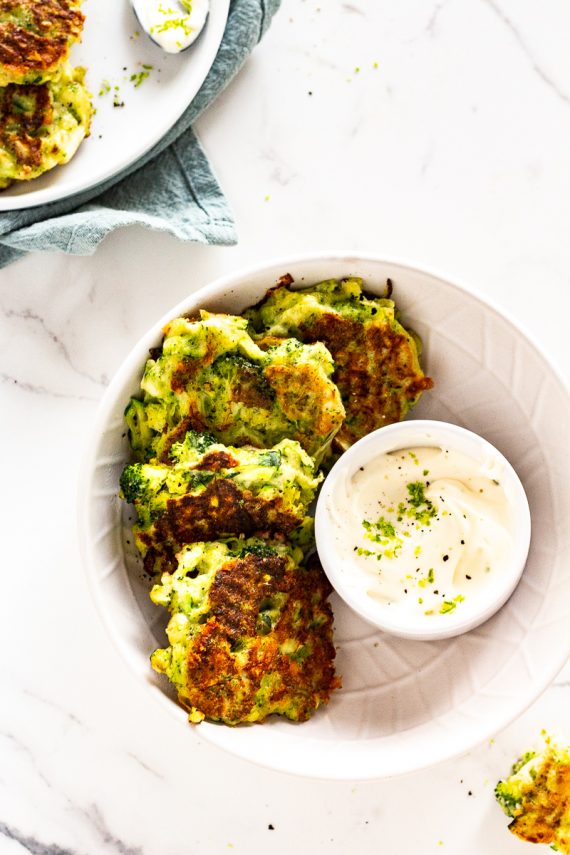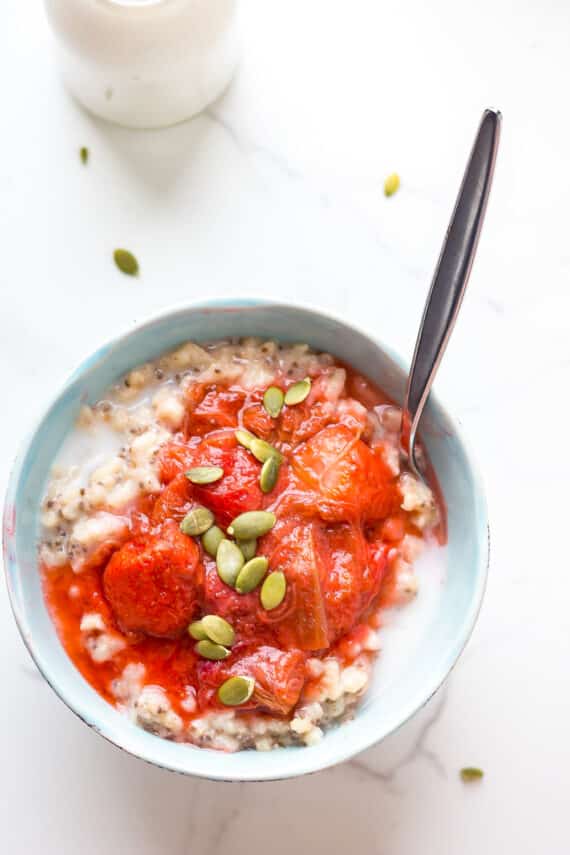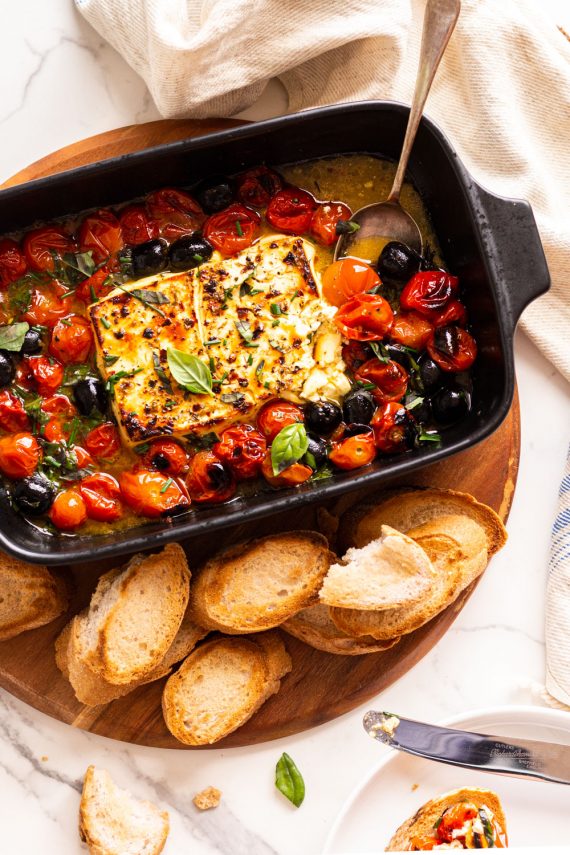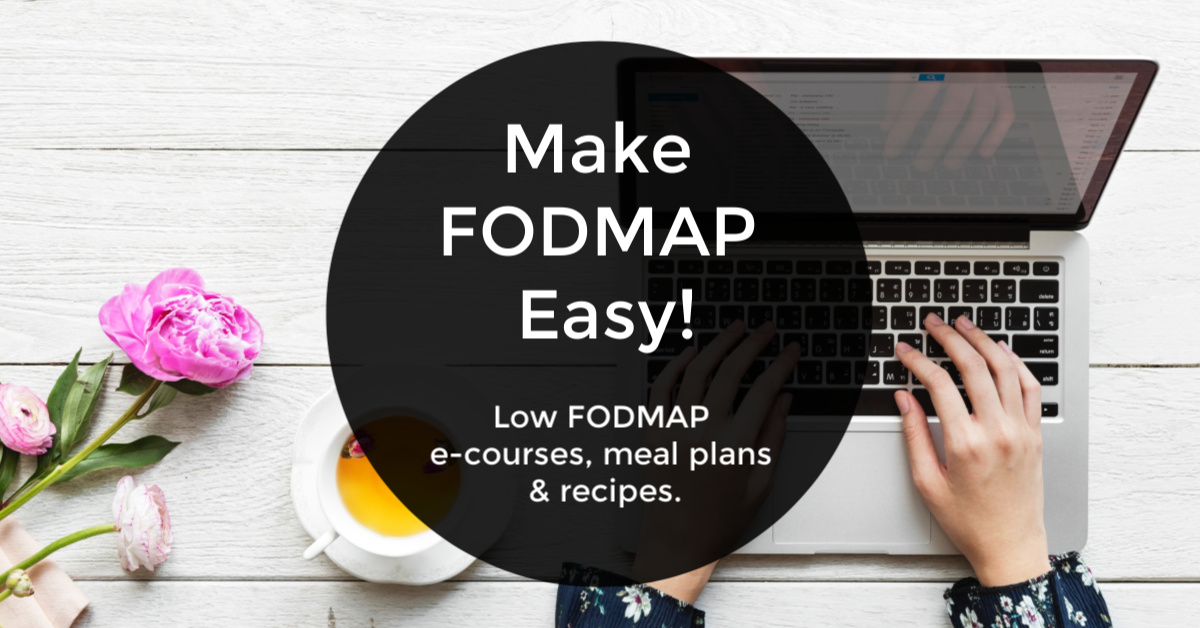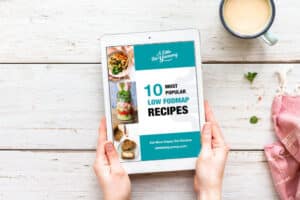Low FODMAP Pumpkin, Spinach & Sundried Tomato Muffins
Ingredients
MAKE GLUTEN FREEMakes 12 servings (1 to 2 muffins per serve)
Pumpkin, Spinach & Tomato Muffins
Equipment
- roasting tray
- standard muffin tray (12 portion)
Low FODMAP Pumpkin, Spinach & Sundried Tomato Muffins
These low FODMAP muffins are packed full of veggies and make a delicious lunch time snack. These are best served slightly warm with a bit of dairy free spread or butter.
According to Monash University research semi sundried tomatoes can have moderate levels of fructose when you consume more than 13g at one time (Source: Monash University App).
Each muffin only contains 4.6g of sundried tomato, which means you can have up to two muffins at a time (low FODMAP level).
Also take care when choosing your pumpkin – see buying tips.
-
Gluten Free
-
Low FODMAP
-
Dairy Free
-
Nut Free
-
Soy Free
Ingredients
MAKE GLUTEN FREESERVES 12 (1 to 2 muffins per serve)
Pumpkin, Spinach & Tomato Muffins
Equipment
- roasting tray
- standard muffin tray (12 portion)
Nutrition per serve
- NON-DAIRY FREE |
- DAIRY FREE |
- GLUTEN FREE
- Method |
- FODMAP tips |
- Gluten Free tips |
- Dairy Free tips
Method
- Preheat the oven to 200ºC (390ºF). Cut the skin off the pumpkin, deseed, and then cut the pumpkin into small bite sized pieces. Place in a roasting tray, drizzle with olive oil, and season with salt and pepper. Roast the pumpkin for 15 to 25 minutes and remove once it is cooked through. Allow to rest for 10 minutes. Leave the oven on.
- While the pumpkin cools, make the muffin mixture. Roughly chop the baby spinach leaves and sundried tomato, finely chop the fresh parsley, and grate the zucchinis or parmesan.
- In a large bowl mix the cooked pumpkin, spinach, parsley, paprika, sundried tomatoes, zucchinis /parmesan, and wholegrain mustard. Fold together gently. In a separate bowl beat together the eggs and milk. Add to the pumpkin mixture along with the flour. Season with salt and black pepper. Fold the batter together until it is just mixed through - try not to over mix it (it’s okay to see a tiny amount of dry ingredients that aren’t mixed through).
- Grease a muffin tray with olive oil. Spoon the mixture into the prepared tray and fill each hole until it is 3/4 full. Top each muffin with pumpkin seeds.
- Bake for 15 to 20 minutes at 200ºC (390ºF), until top and sides of muffin are golden. Allow to cool for 5 minutes before transferring to a cooling rack.
- Storage tip: These muffins freeze well. Then defrost and refresh in the microwave for 20 seconds until warm.
Buying Tips
Make sure the self raising flour is gluten free. We used one made from a mixture of rice flour, maize starch, tapioca starch, sugar, raising agents (450, 500), vegetable gum (Xanthan).
Avoid flour blends that contain soy flour, chickpea/besan/gram/garbanzo bean flour, lentil flour, coconut flour, amaranth flour, or lupin flour.
Low FODMAP milk options include lactose free milk, almond milk, hemp milk, macadamia milk, quinoa milk, rice milk (3/4 cup or less per serve), soy milk made from soy protein (not whole or hulled soybeans), UHT coconut milk (1/2 cup or less per serve).
Make sure your low FODMAP milk does not include high FODMAP ingredients like inulin (chicory root), agave syrup, fructose, high fructose corn syrup, molasses, or honey.
If using a dairy free alternative choose one that contains 120mg of calcium per 100ml serve, and 3g of protein per 100ml serve (this info is in the nutrition label).
Check your mustard does not contain onion or garlic powder.
Choose processed products like sun-dried tomatoes, roasted red peppers, or olives that do not contain onion or garlic in the brine/oil.
Gluten Free Tips
If you are highly sensitive to gluten, check all packaged products, processed meat (like bacon), nuts, seeds and dried fruit do not contain a warning for trace gluten. If you are just on the low FODMAP diet you do not need to worry about this.
Dairy Free Tips
There are no dairy free tips for this recipe.
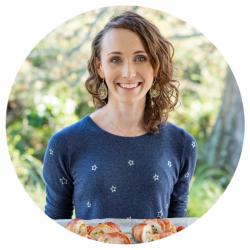
Author: Alana Scott
In 2013, Alana was diagnosed with Irritable Bowel Syndrome. She also suffers from coeliac disease, is allergic to nuts and is intolerant to dairy products. This means she understands how difficult it can be to cook with multiple food intolerances. Her exp... Read More

Professional Reviewer: Kate Watson (RD)
Kate Watson is a FODMAP trained registered dietitian in the USA. She is the former co-founder and president of Nicer Foods, the first company in the US dedicated to making pre-made FODMAP friendly foods. Kate struggled with IBS for two decades until sh... Read More
